Here is a fantastic two parts article about Epcot's World Showcase mythical pavilion that never was, the Equatorial Africa Pavilion. Others countries pavilions were also envisioned and never built, but the Equatorial Africa Pavilion is probably the only one that "almost was" as not only research and models were done but the two films for the pavilion main shows were filmed, too!
You'll see in this first part article great pictures never shown before, Imagineer and Disney artist Herb Ryman artwork for the Africa pavilion in the best definition you've ever seen, Imagineer and Disney artist Ken Anderson original artwork as well as interviews of two important people who worked directly on the project, WDI Imagineer Pat Burke who did the pavilion model and Director Jack Couffer who filmed the movies for two of the pavilion attractions. I want to thanks John Stanley Donaldson for the precious Herb Ryman artwork scans. John is the author of "Warp and Weft", a fantastic book about Herb Ryman that you can find on his site HERE as well as my good friend Didier Ghez for the Jack Couffer interview excerpts coming from the volume 12 of Didier's excellent Walt's People book series HERE. All my thanks too to Pat Burke for the never-seen-before model pictures.
You'll see in this first part article great pictures never shown before, Imagineer and Disney artist Herb Ryman artwork for the Africa pavilion in the best definition you've ever seen, Imagineer and Disney artist Ken Anderson original artwork as well as interviews of two important people who worked directly on the project, WDI Imagineer Pat Burke who did the pavilion model and Director Jack Couffer who filmed the movies for two of the pavilion attractions. I want to thanks John Stanley Donaldson for the precious Herb Ryman artwork scans. John is the author of "Warp and Weft", a fantastic book about Herb Ryman that you can find on his site HERE as well as my good friend Didier Ghez for the Jack Couffer interview excerpts coming from the volume 12 of Didier's excellent Walt's People book series HERE. All my thanks too to Pat Burke for the never-seen-before model pictures.
Above and below three pictures of a different model of the Africa pavilion than the one done by Imagineer Pat Burke. According to Pat, "this model was realized much later and smaller than his concept model, and was done in a smaller copy that could fit into the whole World Showcase model".
The Equatorial Africa pavilion was planned to open one year after Epcot opening, i.e in 1982. For reasons that we will explore it never happened but, first, why "equatorial"? In fact, Equatorial Africa refers to the group of African countries that lie along the equator and to which the pavilion would have paid tribute. The pavilion was also known as the "African Nations pavilion" or the "Africa pavilion" and the Equatorial Africa pavilion would have been located between China and Germany.
At the entrance of the land, surrounded by huge Kopjis rocks, guests would have start their "Africa" experience with a giant 60 foot tall tree house. Up in the tree house a wooden observation platform, which surrounded the upper trunk. From the center of it thanks to WDI Imagineers wizardry and a real movie filmed by cinematographer Jack Couffer guests would have overlook a waterhole at dusk with wild animals of the jungle coming to bathe or drink. It would have been a multi senses experience as, in addition to the far projected 70 mm live action movie projected on a 20 foot screen, was included wind and heat effects as well as scents - thanks to Disney's "smellizer" technology - and HD sound to create the perfect illusion that guests were actually in Africa watching real wild animals.
Above, Herb Ryman artwork showing the African village.
The second show was called "Africa Rediscovered" and was to be hosted by Alex Haley, the famous author of "Roots". Before the show guests would have discover a preshow with a giant relief map of Africa as well as a presentation of Africa's natural wonders of flora, fauna, and climate. Alex Haley had hopes that the 15 minutes film would have teach World Showcase visitors that Africa was a continent with a rich and illustrious history and not a primitive, primeval jungle inhabited by wild beasts and savages.
Guests could also have explored the "Sound Safari" which, thanks to WDI then-new 3D sound technology, would have create "sound illusions". As described in a excellent 2006 Jim Hill article that you can read HERE when World Showcase guests would have walked through a path, "invisible infra-red sensors would have triggered the sound of trumpeting elephants, laughing hyenas and grunting hippos -- seemingly just out of sight behind the thick foliage. To reinforce this illusion, the Imagineers wanted to set up a system of simple but extremely effective special effects along the Sound Safari trail. This would have caused some of the bushes in this attraction to rustle in perfect synchronization with the sound of the out-of-sight jungle animal -- giving WDW guests the impression that there really was something alive and ferocious lurking out there in the bush. As for the Sound Safari climax, "After sending guests across a rickety suspension bridge over a thick jungle that seemed to be full of vicious beasts, the only path to safety for these Epcot visitors was through a darkened cave that echoed with the sound of lions fighting over a fresh kill."
Above, Herb Ryman artwork showing traditional african dances.
Director and Cinematographer Jack Couffer was among the persons who worked with Ken Anderson on the Equatorial Africa Pavilion project. In an interview by Disney historian Didier Ghez published in Walt's People Volume 12 Didier asked Jack Couffer what
was the nature of hiswork on the project.
Jack Couffer: "I was hired to research, write, direct, and shoot
two film shows, both of which were completed. One was the Tree House show. Concept was Ken’s. A
single point of view from the tree house of a waterhole populated by a variety
of animals. It was an imaginative idea that would have been great fun. The idea
was that people would enter the hollow tree in dim light, darkness outside,
they’d climb up a ramp and stand at handrails on a downward-sloping floor,
looking toward the outside through a wide “hole” in the tree. The safari guide
narrator would softly caution them to be quiet so as not to spook the animals
they were about to see when the light came up at the waterhole.
Then a light outside would gradually brighten on the
waterhole. In the foreground there was a “frame” of real three-dimensional
branches of the tree (with a three-dimensional Animatronic lemur on one
branch). A three-dimensional cascade of real water was flowing from near the
tree’s roots away from the tree in a small stream that flowed under a fallen
tree, which was the three-dimensional bottom frame of a rear projection screen
on which we saw the waterhole and its collection of animals. The transition
from three-dimension to flat screen worked very well.
My chore was to shoot the waterhole scene in one
continuous three or four minutes of action (I’ve forgotten the exact time), but
there could be no cuts; it had to be continuous to create the effect, and it
had to be long enough and with enough interplay between the animals to satisfy
the customers.
I built and lit the set and shot on 70mm. The camera
was placed on a scaffold to give the correct perspective at the height of the
tree house “window.” We even placed a log at the foreground edge of the
waterhole to give proper ripples to the pond when animals disturbed the surface
and wavelets splashed against the log. Trainer Hubert Wells managed the
animals, and we shot it in one night after a week of construction and
rehearsals at a game park in Texas. I may have forgotten all the animals, but
there was a mother and baby elephant, zebras, giraffe, eland, roan antelope,
maybe kudu, and maybe others."
Above, Herb Ryman artwork for the waterhole scene that guests would have seen from the observation platform inside the treehouse.
Following Herb Ryan and Ken Anderson artworks and instructions Imagineer Pat Burke worked on the Equatorial Africa Pavilion model and share, too, his memories:
"I worked on the concept model of the Africa Pavilion for over 2 years with Disney Legend Ken Anderson. Ahmad Jafari was the project Architect who took then all the village concepts over to Animal Kingdom years after Disney President Ron Miller closed down the pavilion for World Showcase for several reasons including having no sponsor to finance it. Disney Legend John Hench who always kept an eye on the project also felt the tree needed it's own park and was too big, even after I made 3 scales of it for him to see on the overall Showcase model. Ahmad and I also transferred some of the same ideas to Adventureland in Hong Kong Disneyland. You'll see below Polaroids of my model in development and some sketches of the tree house in design.
I also worked on the viewing room guests would see from inside the treehouse. This one had a rear projected screen with many films done in Africa which had been shot by Jack Couffer just for this pavilion for Ken Anderson, and lay waiting to be rediscovered maybe one day for Animal Kingdom. In the movie animals would come at night to the watering hole and their various sounds and scents would have been directed at the viewing guest port. WED Special Effects dept developed over 100 scents just for this.
I know somewhere i saved a piece of my viewing theater Watering Hole back wall I painted on a curved piece of thin basswood plywood, to match the Herb Ryman interior rendering above. I had to duplicate Herb's style of a jungle forest with the blues and green tones of filtered light with trees interlocking. Artificial trees were than made in front of the backdrop and to soften the edge of the rear projected screen. Overhead hanging vines were also used to match Herbs rending. Having worked on 2 Jungle Cruises by this time with Marc Davis, I was able to pull from those experiences on the Africa Pavillion. Herb and Ken Anderson would come out and looked at it through the viewing port and said "you got it!" with a usual Herb pat on the back. Herb was like the WED teacher on wheels, as he would walk around the whole shop and check up on everyone and everything during the day. He and John Hench were like the next thing to Walt as far as what was correct or not. Then at night during the drawing class we had in the sculpture area of WED, Herb would do the same. I still have some drawings Herb worked on making quick enhancements. At one point I cut a hole in the back of my Watering Hole model and put a plex screen in back of it. We then projected a slide of Herbs rendering shown here on the back of my interior screen, and I sprayed a few of the animal scents into it as they viewed through the front window. Disney Legends Ken, Herb and John all loved the effect.
I know somewhere i saved a piece of my viewing theater Watering Hole back wall I painted on a curved piece of thin basswood plywood, to match the Herb Ryman interior rendering above. I had to duplicate Herb's style of a jungle forest with the blues and green tones of filtered light with trees interlocking. Artificial trees were than made in front of the backdrop and to soften the edge of the rear projected screen. Overhead hanging vines were also used to match Herbs rending. Having worked on 2 Jungle Cruises by this time with Marc Davis, I was able to pull from those experiences on the Africa Pavillion. Herb and Ken Anderson would come out and looked at it through the viewing port and said "you got it!" with a usual Herb pat on the back. Herb was like the WED teacher on wheels, as he would walk around the whole shop and check up on everyone and everything during the day. He and John Hench were like the next thing to Walt as far as what was correct or not. Then at night during the drawing class we had in the sculpture area of WED, Herb would do the same. I still have some drawings Herb worked on making quick enhancements. At one point I cut a hole in the back of my Watering Hole model and put a plex screen in back of it. We then projected a slide of Herbs rendering shown here on the back of my interior screen, and I sprayed a few of the animal scents into it as they viewed through the front window. Disney Legends Ken, Herb and John all loved the effect.
Ken Anderson was always going on trips to Africa for research and doing detailed sketch books of everything he thought would apply for the pavilion. I remember Ken Anderson would make me copies that applied to what I was doing on the concept model. Ken was also purchasing a lot of authentic African props as well, including a dug out canoe for the project. When the Africa pavilion project was turned off, a lot of the props and artifacts went to the Adventurer's Club at Pleasure Island which Joe Rhode was designing. When the Adventurer's Club was closed down, part of the artifacts then moved over to Honk Kong Disneyland's new Mystic Manor. I'm sure Ken Anderson would be glad to see how his influence has spread since he first started the Africa Pavillion."
Below, an issue of "Wonderful World of Disney including Africa sketches from Ken Anderson.
Pat continues: "Here is a photo of Ken Anderson favorite African tree he and I used for the model of the treehouse - and probably also served as inspiration later for Animal Kingdom tree of Life. You can see how large it is and why John Hench thought it needed its own park like the later Animal Kingdom. I used to sculpt the tree house with this picture. The tree is called a Baobab Tree and is sometimes called the Tree of Life as it stores water inside the trunk and branches for life sustaining properties, and it's the reason why it was next to the watering hole. It's interesting that Animal Kingdom's giant tree became the "Tree of Life" following Ken Anderson's lead."
"The viewing screen sketch below is a Ken Anderson concept sketch. Herb Ryman did the waterhole rendering ( picture above ) which I used to create the interior mood and color pallet within the viewing model".
"On the next photo i'm carving the treehouse roof out of real straw cut from a broom."
"You can see on the photo below my clay model in progress. Using clay was rarely used at WED back then, but Disney Legend Tony Baxter did use it on his original 1973 Big Thunder Mountain concept model and Disney Legend Fred Joerger used it on the River Country concept model I worked on as well , at about the same time."
"I used the Herb Ryman watering hole artwork in creating my viewing window for the treehouse model. A construction model of the tree house inner framework made of telescoping pipe extending off a center armature was in development and then had to be turned off. I believe the concept was applied to Animal Kingdom's Tree of Life later on."
"The rockwork grouping that you see on the Ken Anderson 1979 artwork above and pictures of my model below was called Kojpe. Ken was very particular that it have the correct look that Disney had never captured or created before, even in the Jungle Cruise. I remember a few of the rocks were there at the 1983 opening Africa marker taken from the ones I had sculpted."
And now, for the first time, as these pictures like the ones above were never seen before here is the full set of the Polaroid pictures of Pat Burke Equatorial Africa Pavilion model, at different steps in the making. The first Polaroids below shows Pat Burke model of the tree houses and the Kopjes Rocks on its side.
"The rear projected theater was located under the nest or mound of rocks or Kopchi next to the tree-house. You can see where the tree house upper window runs into them and that's where the viewing window would start for the watering hole show inside. Jack Couffer was the cinematographer shooting all the films that would be rear projected on the screen in the viewing room. I think Ken Anderson had a few stills we also projected on the rear of my screen."
"This photo below shows at a very early stage the tree house as I have yet to put the decoration on the wood turned model. It has the Tree of Life trunk and branches extending though it. The clay rock formations in the foreground are covering the indoor where would have been the water hole theater and projection room. You can see a small path leaving the tree house and working it's way through the rock-work which gave guests and wheel chairs a way to exit the viewing room from the treehouse. The building next to it and located on the ground level was the gift shop and maybe later food would be sold there."
"On the picture below the small stage is covered with gathered sticks and an assortment of small thatched viewing huts surrounded it. These are visible in Kens research photo at the base of The Tree of Life you have shown. Disney Legend John Hench loved all these various scaled architectural African huts. Disney Legend and Mr. Rockwork Fred Joerger had suggested to me to make this model of clay, as we had done on the River Country model together and Disney Legend Tony Baxter had done on the first 1/4 inch Big Thunder Model for Walt Disney World about that same time at WED. It really gave me a chance to sculpt the rocks formations the way Disney Legend Ken Anderson wanted. He was very particular to African details."
"The two shots below show the shoreline where 3 African boats would be beached next to a small out cropping of the African style rockwork. This was to be there for opening day of World Showcase as a place holder even if the Pavilion was not there yet."
"I didn't mention it but remembered the tree-house trunk was going to have an elevator in it so the handicapped could get up stairs to view the watering hole. I had to develop the tree's trunk around that elevator. Ken had me make 3 scale blow ups of the tree for the overall World Showcase model for John Hench to look at, and that's when John commented it was just too big in any scale and could use its own park, as later Animal Kingdom became. On the model many branches were left out so that the tree house could be seen, as shown on the model. The trunk remained large so as to house the inner elevator. I can see influences of the African village in the architecture for DLP Adventureland done by the same Architect Ahmad Jafari."
"I built several tree houses as a kid growing up after my first Disneyland visit. I did 2 of them for Disney, 1 on TSI Island in TDL and this one. I also worked on DL Swiss Family Robinson making 3 for WED Enterprises at Disney. Sorry this one wasn't completed"
Actually, this Equatorial Africa Pavilion model was shown during the Epcot Grand Opening TV show with Danny Kaye and Alex Haley - author of "Roots - standing near to the model. You can see the sequence at the 35 min of the video HERE and according to Imagineer Pat Burke: "I think the model with Alex Haley and Danny Kaye is my model because of its odd shape and size. I think they just asked someone to add people and some paint to it. I was known as the tree man as you made trees when work got slow, as well as specimen trees for Ken as found in Africa, like the ones on the model you can see on these Polaroids. I also made full size trees for America Sings, Jungle Cruise, and Big Thunders. I built several tree houses as a kid growing up after my first Disneyland visit. I did 2 of them for Disney, 1 on Tom Sawyer Island in TDL and this one. I also worked on DL Swiss Family Robinson making 3 for WED Enterprises at Disney. Sorry this African one wasn't completed".
Pat Burke continues: "As for the Heartbeat of Africa show, I remember Ken describing it like "a Tiki Bird show only with talking drums". We never mocked up any of that but Ken was doing illustrations and sketches for it. The project was turned off before we could do any dimensional models on the Talking drum theater. Ken had purchased drums from Africa to study for his sketches for the show. Not having any supporting sponsor for Africa, this was all sounding very expensive to Management at the Studio, and remember Ken being frustrated. I hardly ever remember Ken not wearing his Safari coat with all the pockets and belted waist and lots of drawing pens and pencils in the pockets and a drawing sketch book under arm to show me each day.
Don't miss the part two article now on line HERE in which we talk about the incredible "Heartbeat of Africa" show which would have been Equatorial Africa pavilion main attraction and also why the pavilion was never built!
Pictures: copyright Disney, Pat Burke. All my thanks to pat Burke for the Polaroid model pictures and this memories and to John Stanley Donaldson for the Herb Ryman artwork scans!
Pictures: copyright Disney, Pat Burke. All my thanks to pat Burke for the Polaroid model pictures and this memories and to John Stanley Donaldson for the Herb Ryman artwork scans!










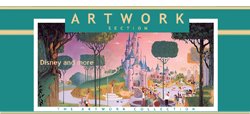
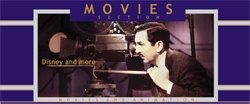











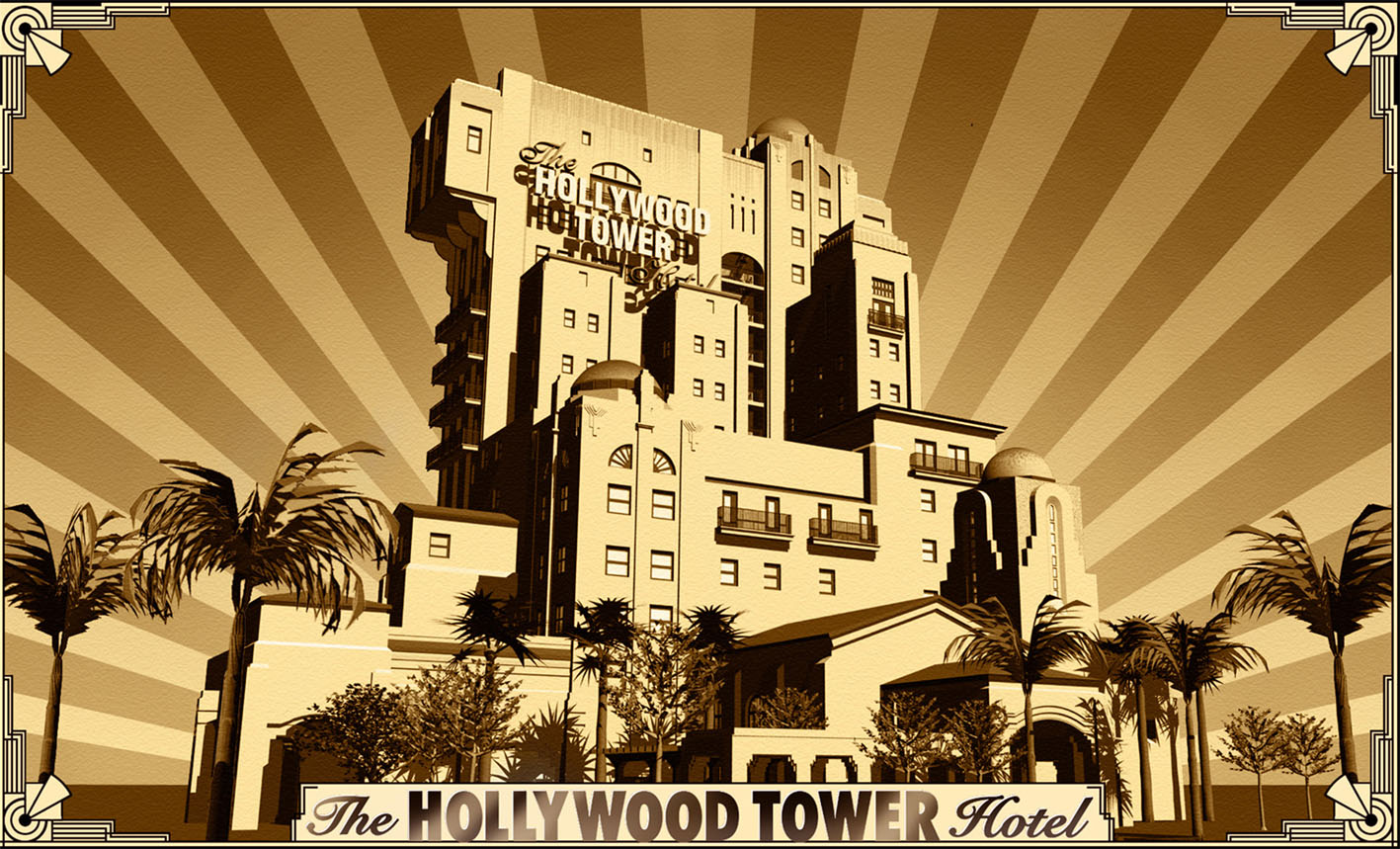



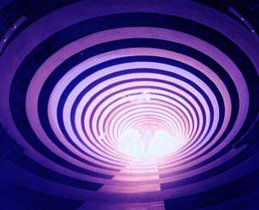
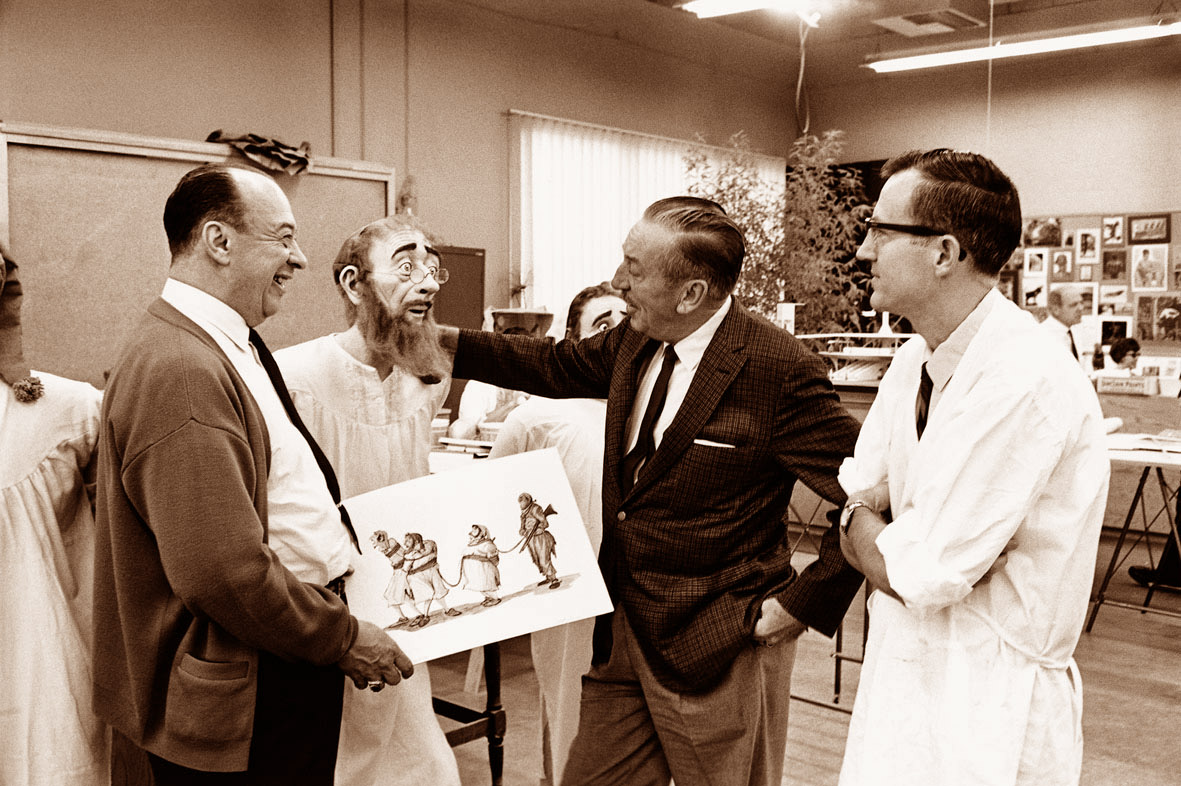
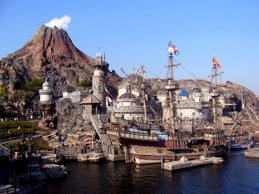

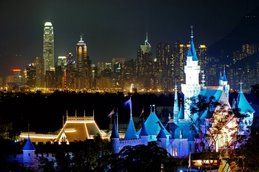

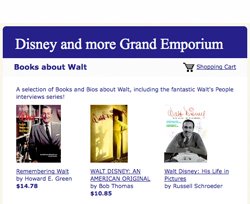









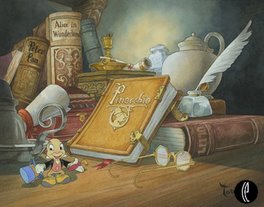
4 comments:
Amazing stuff as usual, Alain!
You are capturing Disney history with these comprehensive articles, rare and vital history that must not be allowed to slip away unnoticed. And we, the readers, are all gratefully benefiting from your efforts.
Thank you, and keep up the good work!
Alain Ditto that! Cant wait to read part 2 tomorrow. Africa may not exist in World Showcase so far, but it has influenced so many other Disney attractions from Animal Kingdom to Mystic Manor. Maybe you will write on the Iran Pavilion next which was but has never been to date in World Showcase like Africa.
I remember my Dad had a 1980ish pre-opening Epcot Center souvenir book. It included Equatorial Africa as one of the "coming next year" World Showcase exhibits.
Great article but a lot of the pictures are not showing up.
Post a Comment